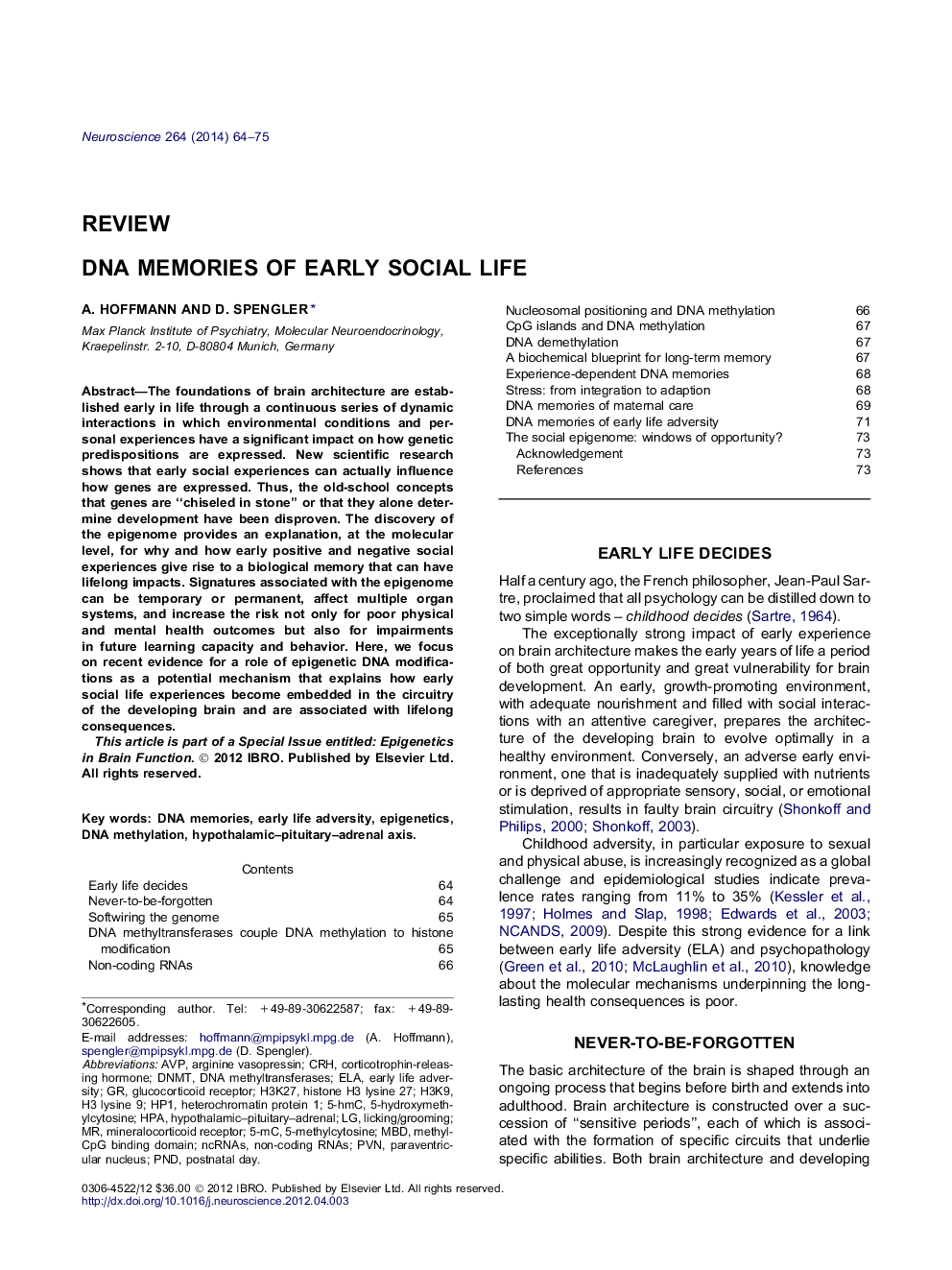| کد مقاله | کد نشریه | سال انتشار | مقاله انگلیسی | نسخه تمام متن |
|---|---|---|---|---|
| 4337657 | 1614812 | 2014 | 12 صفحه PDF | دانلود رایگان |

The foundations of brain architecture are established early in life through a continuous series of dynamic interactions in which environmental conditions and personal experiences have a significant impact on how genetic predispositions are expressed. New scientific research shows that early social experiences can actually influence how genes are expressed. Thus, the old-school concepts that genes are “chiseled in stone” or that they alone determine development have been disproven. The discovery of the epigenome provides an explanation, at the molecular level, for why and how early positive and negative social experiences give rise to a biological memory that can have lifelong impacts. Signatures associated with the epigenome can be temporary or permanent, affect multiple organ systems, and increase the risk not only for poor physical and mental health outcomes but also for impairments in future learning capacity and behavior. Here, we focus on recent evidence for a role of epigenetic DNA modifications as a potential mechanism that explains how early social life experiences become embedded in the circuitry of the developing brain and are associated with lifelong consequences.This article is part of a Special Issue entitled: Epigenetics in Brain Function.
► Foundations of brain architecture and function are established in early life.
► Early childhood experiences generate lifelong changes in brain function.
► Early social life experiences can be mediated by epigenetic mechanisms.
► DNA methylation is a chemical signature that can form a biological memory.
► Early social life experiences can be hard-coded by DNA methylation.
Journal: Neuroscience - Volume 264, 4 April 2014, Pages 64–75